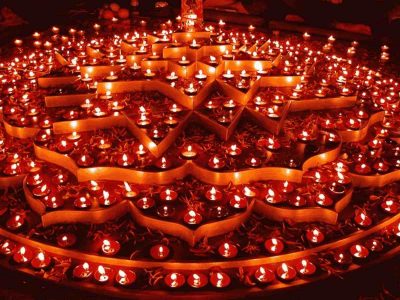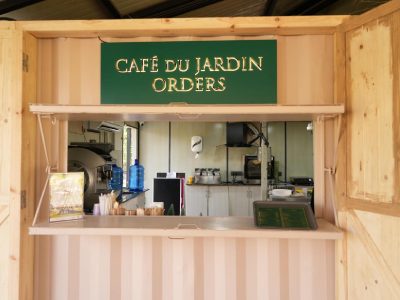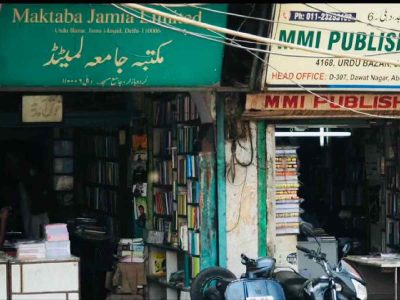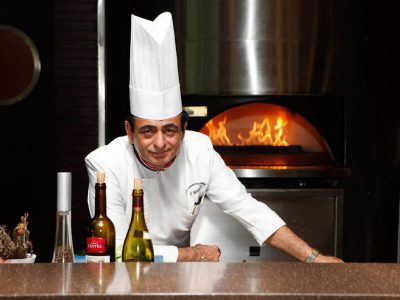A cold wave in Delhi-NCR is a sure sign of snow in the hills. Being in Srinagar when it is covered in white is an experience of paradise you can’t enjoy in the tourist season
Bashir Ahmed, his wife and mother are all smiles. I am tucked into a blanket, sitting on a carpeted floor, kangri between my legs, and a cup of noon chai in my hands. This is a typical Kashmiri household, everyone sits on the floor. Dipping a piece of fresh tandoori roti in my hot cuppa, I ask if they give a kangri to all visitors. The three heads nod in unison, “10 visitors, then 10 kangris,” which are handmade wicker baskets containing earthen pots with simmering coal ashes.
That’s how Kashmir keeps itself warm — even on the streets, people sit with a kangri during winter, drinking kahwa. While noon chai is made with salt and baking soda, kahwa is a blend of spices and saffron. Bashir is my chauffeur and guides for the next two days, as he works with The Lalit Grand Palace Srinagar, where I am staying.
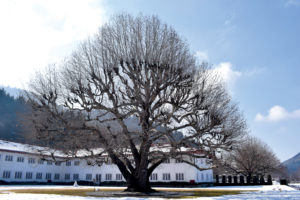
Lakes and Palaces
Dal Lake is the most touristy zone in the city. And the Lalit Grand Palace, a heritage hotel, offers a beautiful view of the lake and the snowy Himalayas. This is the heavily guarded VIP zone and a green zone where construction is not allowed. The Grand Palace was the winter home of Maharaja Hari Singh, the last king of Kashmir. It was built in 1910 by his uncle Maharaja Pratap Singh and has played host to ‘Who’s Who’ for the last 100 years. Lord Mountbatten has walked the corridors here. Bollywood actor Shammi Kapoor has been here.
Scenes from the movie Kabhi Kabhie (1976) were shot here and in recent times Salman Khan has stayed here, besides many heads of states and corporations. But more iconic than the building is the chinar tree in the premises, under which Mahatma Gandhi and Maharaja Hari Singh discussed the Kashmir issue in June 1947.
Every corner of the palace gives a flavour of the life in Kashmir with handmade artefacts, carved walnut wood furniture, golden roof made in Persian style, handcrafted copper samovars, and beautiful people with peachy cheeks. While the hotel does offer global cuisine, I enjoy the regional flavours.
Old is gold
Srinagar is paradise if you explore with a native. The front office manager Zeeshan and Bashir are all smiles at my decision to see the city and not rush to Gulmarg to see more snow-covered meadows and slopes. Even as the Army guards the state, the city moves on with its daily tasks. Sundays are lazy and traffic jams are under control.
We drive to the famous Jamia Masjid, built in 1394 by Sultan Sikandar Shah Kashmiri Shahmiri, Sultan Zain-ul-Abidin’s father. This is the sensitive part of the city where many protests are held, but I see only shopkeepers and people basking in the winter sun. The snowfall of the last few days is on pause mode. Hair tucked under my cap, I gaze in awe at the magnificent deodar pillars — 378 in all. The huge prayer halls can accommodate up to 33,333 people at one time. Destroyed by fire thrice, the masjid has undergone repair in 1480, 1620 and 1672. Snow rests in the courtyard, over the fountains, and we walk around the market area.
Winters being harsh in the valley, people would dry vegetables and fish and store them. Now, you can buy these dried onions, brinjals and more at the shops here. Vendors selling fresh fish, meats, rolls with chickpeas and boiled lentils with special Kashmiri masala are sitting in different parts. Shops selling hijabs, burkas and pherens are open. Some of these are hand embroidered and really expensive.
With the narrow roads being empty on a Sunday, we drive to another part to see the oldest mosque in Kashmir — Khanqah-e-Moula, the resting place of Persian saint Shah-e-Hamadan. But before reaching there, we stop to see some handcrafted copper utensils. This part is even more old world — people sit inside on the floor to see the wares and haggle with the shopkeeper. There are no shelves, just overladen shops where only the shopkeeper knows what is kept where. It’s all so personal. Kashmir has the most amazing handcrafted copper utensils and most people use them on a regular basis. “No Kashmiri would even think of eating out of any other kind of utensil,” Zeeshan confirms.
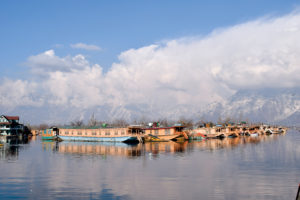
A slow walk here would have been nicer, but the shrine beckons. Khanqah-e-Moula is where the first azaan in Kashmir was held, says Bashir. Located on the right bank of the river Jhelum, between the Fateh Kadal and Zaina Kadal bridges, this old wooden building dates to 1395. Mir Sayyid Ali Hamadani, the Persian saint came to Kashmir in the 13th century, and is credited with the conversion of Kashmiris to Islam. The beautifully done interiors are reminiscent of Persian art. The natural motifs and colours shine in the sun.
Children play while the mothers pray. The breeze carries the prayers to the creator, but we head to the backside where an orange stone marks the site of an ancient Kali shrine. Some historians say that the shrine was destroyed and the mosque built on top, but no one seems to bother now. The orange stone is revered by Hindus and Kashmiri Pandits.
Our last stop in the old city is the tomb of Zain-ul-Abidin’s mother. This red brick structure has five domes. And the area is also a cemetery. Not many Indian tourists come here, I feel privileged to be among the few to see it.
Churches and hangouts
We head to another VIP zone which houses All Saints’ Church, dating to 1896. It’s truly a sunshine day as I find the church open. Reverend Veenu Kaul, his wife Prem Kaul and sister Ruksana Rigzin are there. They are the ‘last of the Mohicans’, a handful of converted Christians who live in the valley without fear or desire to leave.
Reverend Kaul’s father was a Kashmiri Pandit who converted to Christianity. His wife is the first Kashmiri Pandit in her family to convert. The couple live in a society near Yusmarg, the only Christian family amid Muslims and Sikhs. “We celebrate all festivals together and live peacefully,” say the duo. The Protestant church falls under the Diocese of Amritsar. The congregation is small here with only 15-20 members and the church opens on Sunday for service.
Since its inception, the church has been burnt twice. But its beauty is undimmed, with the cross built from ceramic parts by artist Jyoti Sahay and the old wall paintings with verses from the Bible written in Urdu. The paintings were restored by INTACH and later a Jewish lady artist from the US retouched them in 1967. In winter, only one room remains operational, as it has a hamam. This is the Mughal legacy of central heating. A space under the floor where wood and coal are burnt that keeps the room warm. It’s an intricate system of construction and found only in old buildings of Kashmir. And here am I experiencing the warmth of Kashmir in myriad ways.
The electricity does play truant during the winter. The streets are quiet as the sun goes down for the day. The night is a little scary but through the twinkling lights, Bashir takes me to Chai Jaai, a new hangout place in town, serving delectable Kashmiri snacks and kahwa. A gang of girls is busy with selfies and Insta poses, but I enjoy a pot of kahwa with sheermal, the traditional sweet roti. Kahwa is served the traditional way, in a samovar (handcrafted copper pot), and I sweeten it with gulkand, ending my Srinagar sojourn on a sweet note.
Around and about
• There are regular flights to Srinagar from Delhi.
• Enjoy the touristy zones of Nishat Bagh and Hazrat Bal.
• See the traditional silk carpets at Shaw Art Palace, Cheshmashahi. They also have a weaver here who can show you how silk carpets are made.
• Pahalgam is a day’s trip. En route Pahalgam, you can see Pampore where saffron is cultivated, Baramula where the best bats are made from willow, the ancient site of Avantipur which houses Shiva and Vishnu temples and Mattan which has an ancient Martand (sun temple) and a gurudwara.


